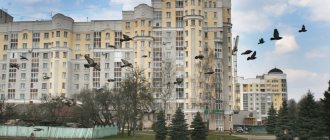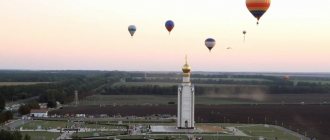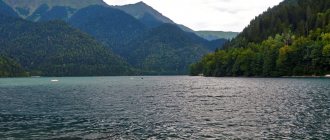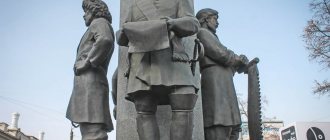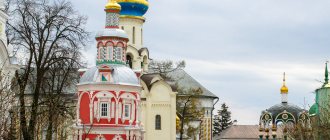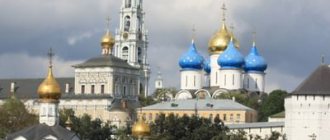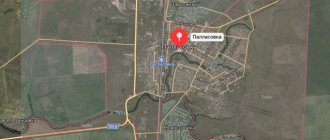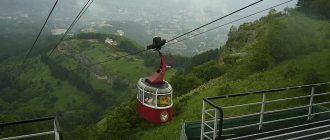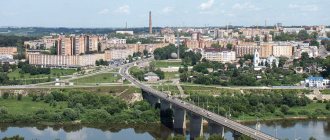Anthem of the Yamalo-Nenets Autonomous Okrug
The anthem of the Yamalo-Nenets Autonomous Okrug is a symbol of the Yamalo-Nenets Autonomous Okrug along with the coat of arms and flag and must be performed in strict accordance with the established musical edition and text.
The anthem of the Yamalo-Nenets Autonomous Okrug can be performed in orchestral, choral, orchestral-choral or other vocal and instrumental performance. When performing the anthem, audio and video recording media, as well as television and radio broadcasting media, may be used. The anthem is performed:
at the opening and closing of ceremonial and protocol events, during ceremonies and other events dedicated to official holidays of the Yamalo-Nenets Autonomous Okrug or held by public authorities of the Yamalo-Nenets Autonomous Okrug, local government bodies in the Yamalo-Nenets Autonomous Okrug;
during the official ceremony of raising and lowering the flag of the Yamalo-Nenets Autonomous Okrug;
when taking office as Governor of the Yamalo-Nenets Autonomous Okrug - after taking the oath;
at the opening and closing of meetings of the Legislative Assembly of the Yamalo-Nenets Autonomous Okrug;
during ceremonies of official meetings and farewells of senior officials of the constituent entities of the Russian Federation, delegations of government bodies of the constituent entities of the Russian Federation visiting government bodies of the Yamalo-Nenets Autonomous Okrug on official visits, after the performance of the anthem of the corresponding constituent entity of the Russian Federation;
during the ceremonies of meeting and seeing off delegations of foreign states visiting the Yamalo-Nenets Autonomous Okrug on official visits, in compliance with the procedure provided for by federal legislation;
at the opening of monuments and memorial signs installed by decision of government authorities of the Yamalo-Nenets Autonomous Okrug, local government bodies of municipalities in the Yamalo-Nenets Autonomous Okrug;
in general educational organizations and professional educational organizations, regardless of the form of ownership, located on the territory of the Yamalo-Nenets Autonomous Okrug - before the first lesson (session) on the day of the start of the new academic year, as well as during ceremonial events held by these educational organizations dedicated to state and municipal holidays.
It is allowed to perform the anthem during sporting competitions, taking into account the regulations of the relevant sporting events. The anthem may be performed during international sports competitions on the territory of the Yamalo-Nenets Autonomous Okrug in compliance with the procedure provided for by federal legislation.
About the city Naryan-Mar
Naryan-Mar (Nen. Naryana mar" - "Red City") is a city (since 1935) in Russia, the administrative center of the Nenets Autonomous Okrug. The city is located beyond the Arctic Circle, located in the lower reaches of the Pechora River, 110 km from the Barents Sea.
The distance from Moscow to Naryan-Mar is 1500 km, from Arkhangelsk to Naryan-Mar – 660 km. The nearest railway station - Usinsk - is located at a distance of 350 km; it can be reached by land only along a winter road (winter road).
Story
Background
The idea of building a city in the lower reaches of the Pechora River arose a long time ago. Rich wildlife, beautiful places, a large navigable river, the opportunity to trade timber - all this attracted people to the North. Information from Russian chronicles leaves no doubt that the area of Nizhnyaya Pechora was well known already from the 12th century. Here the local tribes - Yugra, Pechera - first carried out barter trade with the Russians. As the power of the Novgorod Republic and then the Moscow Principality grew, barter trade was replaced by tribute. In 1499 Pustozersk was founded. In the 18th-19th centuries, new villages and hamlets appeared on the banks of the Pechora estuary; Velikovisochnoye, Oksino, Telviska, Kuya - whose residents were engaged in traditional farming, fishing, hunting, and reindeer herding. In the second half of the 19th century. shipment of Pechora forest began abroad. Since 1897, the Partnership of the Arkhangelsk-Murmansk Express Shipping Company has established sea routes between Arkhangelsk and the lower reaches of the Pechora (Kuya village). In 1903, on the territory of modern Naryan-Mar, the Pechora timber mill was founded, created by the Stella Polare partnership led by the Norwegian timber merchant Martin Olsen.
Foundation of the city
In 1924, an agency of the Northern Shipping Company was opened in the Beloshchelye tract. The staff consisted of eight people. 2 frame warehouses and a shed were built, which were dismantled for the winter.
On September 4, 1931, a meeting of the commission of the Arkhangelsk regional committee of the CPSU (b) was held in Beloshchelye. The only question is “About the construction of the Pechora port.” The main reason for the construction changes was the discovery of the Vorkuta coal deposit by geologist G. A. Chernov in 1930. There was only one way to deliver coal to the consumer - through the Pechora port. This is how the working village of Naryan-Mar (Red City) was formed. In order for the village to be formed, it was necessary to unite the territories and populations of the timber plant, Beloshchelye, the villages of Kalush, Karmanovo (Gorodetsky), Nosovo (Kachgort) and the village of Ekusha. The first buildings on the territory of the future city were a residential barracks for 65 people, an eight-apartment building, a canteen, a post office, a “Nenets house,” a hospital, and a printing house.
On December 18, 1931, a resolution was adopted by the Presidium of the Nenets Regional Executive Committee: “Due to the inconsistency with the understanding of the word “mard”, the name of the workers’ settlement should be written “Naryan-Mar”.
By decree of the All-Russian Central Executive Committee of March 2, 1932, the administrative center of the Nenets National Okrug, the Northern Territory, was moved from the village of Telvisochnoye to the working village of Naryan-Mar.
On April 9, 1934, the V Plenum of the Nenets Regional Executive Committee adopted the Decision to transform the workers' village of Naryan-Mar, where over 8,000 people lived, into the city of Naryan-Mar. March 10, 1935. By decree of the Presidium of the All-Russian Central Executive Committee, the working village of Naryan-Mar in the Nenets District of the Northern Territory was transformed into a city.
1930s
In 1934, by decision of the village council, the first streets were named. They were Naberezhnaya Street, Partizanskaya Street (now Pyrerki Street), Zapolyarny Avenue (now Smidovicha Street), Olennaya Street (since 1936 it has been Vyucheysky Street) and Polyarnaya Street. In the same year, the city leadership decided to begin construction of the House of Soviets. In 1934, the pedagogical school graduated its first specialists. In 1932, a reindeer herding zonal station began operating. In 1933, a fish trust office was organized. At the same time, the seaport increased the pace of its work. In the same 1934, the library began educational activities, and then the district museum was opened. The development of education did not lag behind the general development of the city. Since 1934, a cultural education school and two secondary schools operated in the city.
In 1936, a weather warning bureau was created.
In 1937, a professional drama theater was opened, subsequently transferred to the city of Kotlas.
Trade consisted of two department stores, a specialty grocery store, and a specialty store selling goods for the tundra population.
On February 13, 1933, the first polar airline was opened, which connected Arkhangelsk with Naryan-Mar. In 1932, the first radio center with 110 radio points began operating, and in 1937 the authorities established direct telegraph communication with Arkhangelsk.
On March 30, 1937, in Naryan-Mar, the planes of the expedition flying to the North Pole landed on the ice of Pechora to organize the world's first polar drifting station, North Pole-1. Due to bad weather, the stop in Naryan-Mar lasted for two weeks. On April 12, 1937, the planes flew to the polar station Matochkin Shar (Novaya Zemlya). There is a memorial plaque installed on the house where the polar explorers lived.
The Great Patriotic War
During the Great Patriotic War, Naryan-Mar was a rear city. Since October 1941, a military airfield began operating in the city, which belonged to the 772nd air base of the White Sea Military Flotilla. Airplanes from Naryan-Mar carried out reconnaissance flights in the Arctic. On June 22, 1943, the German Yu-88 plane flew over Naryan-Mar for the only time during the entire war; it is assumed that it carried out aerial photography of the city and nearby settlements.
On Aviation Day 1944, workers of the Naryan-Mar seaport handed over to the pilot of the White Sea Military Flotilla V.V. Tomashevsky's Il-4 bomber "Worker of the Pechora Fleet", bought with money from port workers. On September 7, 1944, the leading workers of the Nenets District handed over to the pilots of the White Sea Military Flotilla the Yak-7B fighter from the Naryan-Mar shipbuilder, which was awarded to the Hero of the Soviet Union, Captain A.K. Tarasov. In 1946, the fighter was delivered to Naryan-Mar and installed in the park as a monument to Soviet people who worked in the rear (lost in 1956 and restored in 2010).
On August 16, 1942, a group of ships left the village of Khabarovo for Naryan-Mar. It included the tugboats Komsomolets, Nord and Komiles. The Nord towed the faulty Komiles and the Sh-500 lighter, and the towing steamer Komsomolets towed the P-4 barge. The latter housed 300 people, most of whom were prisoners from Norilstroy camps. On August 17, at about 7 o'clock in the morning, when the caravan was passing two miles from the northern coast of Matveev Island in the Barents Sea, the German submarine U-209 surfaced near it and opened artillery fire. The lighter "Sh-500", the barge P-4 and the towing steamer "Komiles" were sunk. The towing steamer "Komsomolets" caught fire and washed ashore. The steamer "Nord" managed to escape. Of the 328 people who were on the ships of the destroyed caravan, 305 drowned or died during artillery shelling. In memory of this event in Naryan-Mar, on Saprygina Street in November 1968, a monument to the crew of the tugboat Komsomolets was erected.
1940s – 1980s
Local industry in the 30s and 40s was represented by a handicraft brick production enterprise in Ekusha. In 1940, they produced 1 million 100 thousand bricks. And the city’s housing stock at that time was 52.4 thousand square meters. m. total area. A new stage in the development of the city in the late 40s and 50s was marked by the construction of a block of residential buildings along Vyucheyskogo Street. In the 60s, the first brick buildings were put into operation - a recreation center and school No. 3. In 1975, builders commissioned the first multi-storey brick building - the building of the regional committee of the CPSU, now the city administration. And in 1981, workers of the Naryan-Mar SMU received apartments in the city’s first new panel building. Construction was transferred to an industrial basis. With the start of construction of brick and panel houses, a centralized water supply and a local sewerage system with local treatment facilities are being introduced. The system of serving citizens was also improved. The first bus route opened in 1955. With the creation of a city diesel power plant in 1959, a stable power supply was established, and in the early 60s, residential buildings began to be switched to central heating.
Since 1973, Naryanmar residents have been watching television programs through the Orbita station. And in 1978, natural gas came to residential apartments, and the conversion of boiler houses to gas fuel began. In 1973, a 92-meter bridge across the river was built. Kachgortinskaya Kurya, and then, in 1983 - a 57-meter across the river. Sawmill chicken. In the 80s, new capacities were introduced at the power plant and oil depot, a bakery was built, and in 1989, a four-story building of the district hospital was built. In the 80s, a new clinic and pharmacy, the Pechora Hotel, a boarding school with a dormitory building, a department store, and a music school were built. A whole block of modern panel residential buildings has appeared.
1990s and today
In the 90s, the pace of development of the city, as well as the entire country, decreased, and some residents began to leave Naryan-Mar. However, even at this time, several residential buildings, the Promstroibank building, a cash settlement center, and the federal treasury were built in the city. Since the beginning of the 21st century, with the growth of oil production in the Nenets Autonomous Okrug, the city has received a new impetus in its development; in the first decade, dozens of modern monolithic and brick buildings have appeared, roads and communications are being built and repaired, dilapidated housing is being actively demolished and residents are being resettled into new comfortable apartments.
In September 2009, Naryan-Mar was visited by the President of South Ossetia Eduard Kokoity, who participated in the celebrations dedicated to the 80th anniversary of the Nenets Autonomous Okrug.
On October 4, 2011, in Naryan-Mar, President of the Russian Federation Dmitry Anatolyevich Medvedev held a meeting of the Presidium of the State Council on housing and communal services issues.
On July 29, 2012, the President of Vietnam Truong Tan Shang paid an official visit to Naryan-Mar.
Economy
Industry
- Seaport and river pier
- Food industry enterprises
- OJSC "Nenets Oil Company"
- Oil
- JSC "Naryan-Marseismorazvedka"
- JSC "Naryan-Mar United Air Squadron"
- Gas pipeline from the Vasilkovo field, terminal point Naryan-Mar
Attractions
- Administration building of the Nenets Autonomous Okrug
- District library
- Museum of Local Lore
- Post office building
- Monument to the 500th anniversary of Pustozersk
- Monument to Yak-7B
- Cultural and business
- Monument to the crew of the tugboat "Komsomolets"
- Monument to the “Feat of the Participants of the Reindeer Transport Battalions during the Great Patriotic War”
Transport
Urban
Bus transport has been operating in the city since 1955, currently serving 6 routes:
- Route No. 411: Naryan-Mar - Iskateley village
- Route No. 2: Seaport - st. Lenin
- Route No. 4: Seaport - Airport
- Route No. 4a: st. Lenina - Airport
- Route No. 7: Seaport - lake. Unnamed
- Route No. 8: Seaport - st. Mira
LiAZ-5256, PAZ-4234 and PAZ-3205 buses are used on the routes.
Long distance connections
Naryan-Mar is not connected to other cities either by a permanent road or by railway. Since 1991, large-scale construction of the Naryan-Mar - Usinsk road with a length of 386 km has been underway. 80 km have not been completed. The route should connect the Nenets Autonomous Okrug with the Komi Republic and provide it with access to the railway junction in Usinsk. From December to April you can drive to Naryan-Mar along the winter road from Kharyaga. During the navigation period, the Shchelyayur - Naryan-Mar ferry service operates on Pechora.
Until the highway is built, aviation remains the main mode of transport to get to Naryan-Mar. Naryan-Mar Airport accepts An-24, An-26, An-12 Tu-134, Yak-40, Yak-42, Il-18, Boeing 737, ATR 42 aircraft, and helicopters of all types. The operator of the airport is JSC Naryan-Mar United Aviation Squad, which has An-2 aircraft and Mi-8 helicopters in its fleet. Regular flights are operated to Moscow, St. Petersburg, Arkhangelsk, Kirov, Syktyvkar, Usinsk, as well as on local air lines.
Cargo is delivered to the city by sea from Arkhangelsk, as well as by river from the city of Pechora.
Climate
The climate of Naryan-Mar is subarctic, with long winters and short, cool summers. The city is located in a permafrost zone, but there is no permafrost within the city. The polar night lasts from December 14 to December 30. Winters are relatively mild for polar latitudes due to the influence of the Barents Sea, however, spring and autumn are long and cold, and summers are cool. The average daily temperature crosses zero only in May, and again crosses zero at the beginning of October. The polar day lasts from May 30 to July 15, and white nights are observed from April to August. Summer is cold, with an average temperature of only 13 degrees (with quite strong variations from year to year, the warmest July was observed in 1974, and the coldest in 1968, with average temperatures of +18.8 and +7.7, respectively). In summer, sometimes hot air masses from the steppes of Kazakhstan can reach the city, then the temperature can exceed +30 °C in the shade.
Population
- 1939 – 13,700 people
- 1959 – 13,222 people
- 1970 – 16,864 people
- 1979 – 23,435 people
- 1989 – 20,182 people
- 2002 – 18,611 people
- 2010 – 19,820 people
- 2011 – 21,338 people
- 2012 – 22,375 people
Text
Among the gray polar latitudes, Where blizzards rule the eternal ball, Snow-covered Yamal rises as a hero of legendary pasts!
Harsh region! Stronghold of the Power! You are getting stronger every year. Yamal is a treasure and glory, and the pride of my Motherland!
Your motto is everything for a person! And, ready for new exploits, You solve the problems of the century, Keeping the traditions of your fathers!
Harsh region! Stronghold of the Power! You are getting stronger every year. Yamal is a reliable son and glory, and the pride of my Motherland!
The land of discovery and daring. The imperious call of the endless tundra, Where the lights of Yamal cities argue with the northern lights.
Harsh region! Stronghold of the Power! You are getting stronger every year. Yamal is my love and glory, and the pride of my Motherland!
Words by L.V. Khodunova
Music by Y.R. Junkerova
Anthem of the Yamal-Nenets Autonomous Okrug:
Your browser is not supported
Anthem of the Yamal-Nenets Autonomous Okrug without words:
Your browser is not supported
